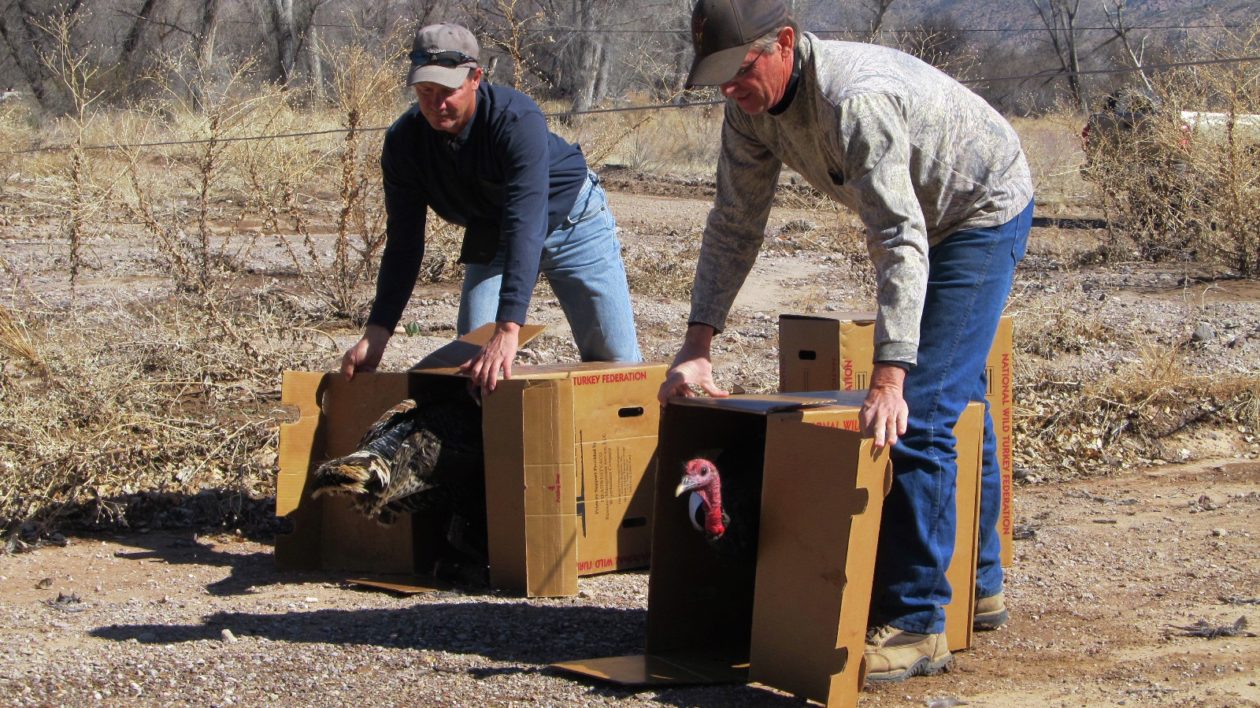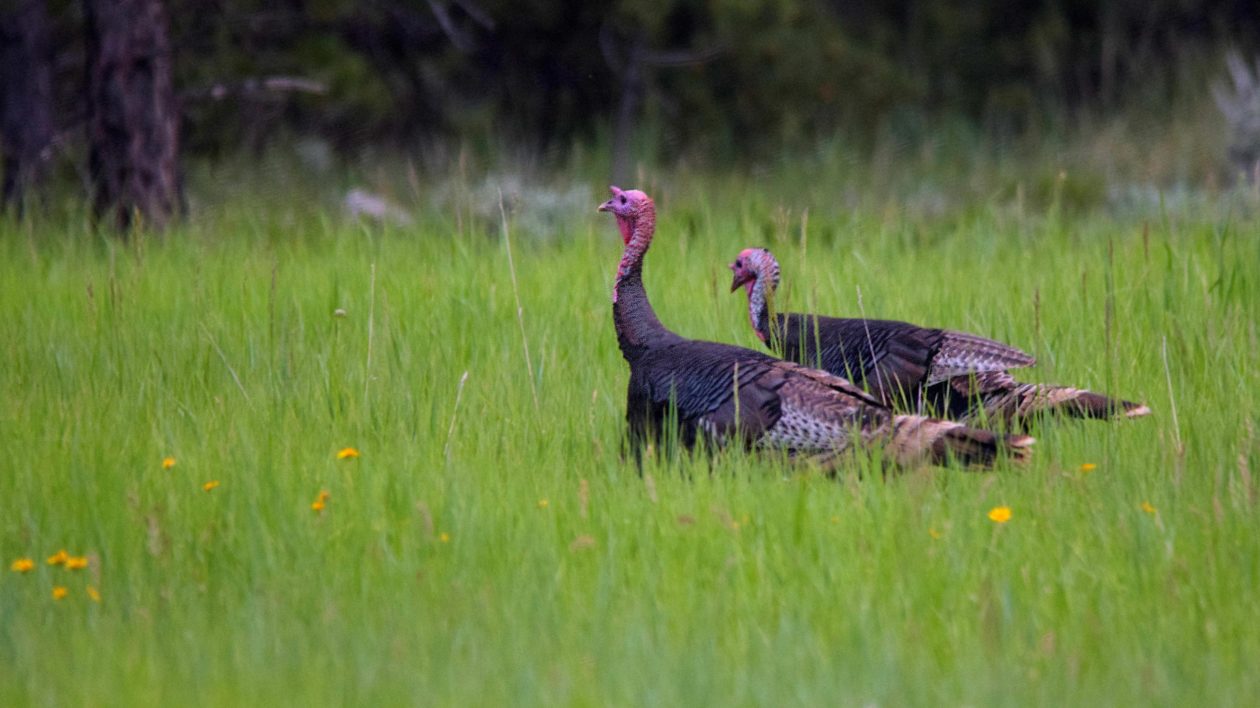The restoration of the American wild turkey may be the greatest wildlife conservation success story. Ever.
Consider this: many conservationists once thought turkeys would go extinct. And who could blame them?
By the early 1900s, the continent’s wild turkey population had been reduced to an estimated 30,000 birds—a smaller number than today exists for orangutans, polar bears and African elephants, all species with futures causing considerable angst among conservationists.
Rampant poaching and habitat destruction offered little hope for the wild turkey’s future.
Fast forward to today: 7 million turkeys trot, cluck and scratch around North America, occupying almost all suitable habitat and even expanding beyond their original range.
How did conservationists achieve this dramatic turnaround? Can we repeat it?

Return of the Turkey
Wild turkeys declined for the same reasons that doom so many species: overhunting and habitat loss.
European colonists viewed turkeys – and most other wildlife – an unlimited resource, to be shot and sold for any reason, at any time.
It seemed that nothing could turn this slaughter around, but fortunately conservationists –Theodore Roosevelt, George Bird Grinnell and others – rallied. They created protected areas. They started a movement to pass game laws and enforced them.
The habitat loss, in part, took care of itself. The forests of the eastern United States had been logged and cleared, but when farms were abandoned and logging stopped, they quickly reverted to woodlands. While studies show eastern forests face numerous problems, turkeys have proven adaptable; they can live in even small suburban woodlots.
Citizen conservationists played vital roles, from protecting habitat to funding turkey reintroduction efforts. Groups like the National Wild Turkey Federation worked closely with state and federal agencies to ensure a full restoration of wild turkeys.
There were missteps, to be sure. At one point, many state agencies relied on hatchery programs that raised turkeys like livestock, and then released them.
You can take a turkey from the farm but you can’t remove the farm from the turkey. They behaved like domestic birds, ill adapted to live in the wild. These naïve creatures fell quickly to predators, hunters, disease and weather.
On the other hand, trapping wild turkeys in areas where they thrived and reintroducing them to suitable habitat proved spectacularly successful. The birds quickly established themselves in reforested areas. Suddently they began showing up in places they hadn’t been seen in a century.
The first time I saw wild turkeys in the 1980s, few believed me.
My dad and I saw dark forms moving through the woods as we hunted deer in central Pennsylvania. It took a while to realize what we were seeing. The birds moved silently, like ghosts, as turkeys so often do when alarmed. But these were not ghosts. They were part of a nationwide wave of reintroduced turkeys reclaiming their old haunts.
Today, I love walking through the woods and seeing where they’ve scratched for acorns and insects. I listen for their yelps, clucks and gobbles. I watch for the flocks quietly moving through the hardwoods.
They’re back, a dramatic turn of events for a spectacular bird.

Too Much of a Good Thing?
Wild turkey restoration has been so dramatic, in fact, that some say there are now far too many of the birds.
They increasingly rule the suburbs, taking advantage of the mix of forest fragment, lawns and other green spaces. As Jim Sterba reports in his thought-provoking book Nature Wars,they sometimes create problems for their human neighbors. They tear up lawns, cause accidents and even chase around residents, inspiring headlines like “Feathered Menace: Wild Turkeys Threatening Suburbia.”
Attack of the turkeys? Has it really come to this?
With all due respect to those terrorized by large birds, perhaps the bigger problem is that we’re taking a conservation success for granted. We mourn the passing of billions of passenger pigeons and endless herds of bison, then act like it’s a crisis when abundant wildlife returns.
Few environmentalists see a flock of turkeys in the neighborhood – or, say, geese on a golf course – and exclaim: “Success!”
Which is too bad. One of the goals of conservation is after all, to restore wildlife abundance. We have to find ways to accept the wildlife in our own backyards, even if it is not always easy or convenient.
Still, this seems like a good problem to have. If, a century from now, people were fretting about too many rhinos in Africa or too giant pandas in China, we’d say we were spectacularly successful.
Turkeys prove what we can accomplish – when there is passion and political will. Let’s not overlook a spectacular success. This Thanksgiving, raise a toast to the return of the American wild turkey, and use its example to help guide our way in restoring other wildlife.




Has there been any effort to test the nuisance turkeys, that show no fear of humans and hang around suburbs and cities, to see if they have a mix of domesticated and wild genes? It seems likely, since the wild birds are legendarily wary. Not that it makes it ok, but I have noticed that in many of the you tube videos the human being attacked is wearing red. A child with a red back pack, a woman wearing a red t-shirt. The baseball team on the Cape that gets menaced has red as their team color. Bulls don’t care about red, but turkeys see it as a challenge to fight.